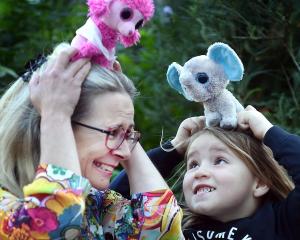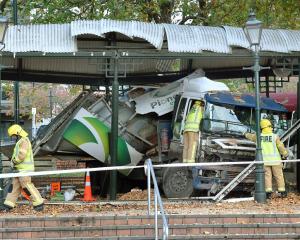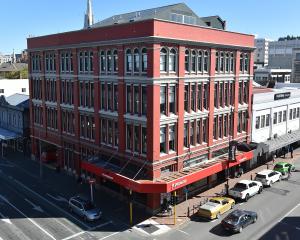New chief executive Carole Heatly, a Scotswoman who started last month, said yesterday she had spent much of the past six weeks on the "shop floor" gaining an understanding of the DHB's issues.
"It's fair to say the organisations, Southland and Otago, merged [in 2010] ... but we've got a number of things we need to do to make that merger real for the people who work for the organisation."
Her first step was restructuring the roles of 11 executives who reported directly to her.
That could see two fewer members in the top team, but redeployments were highly likely.
Details go to staff for feedback next week, but the proposal included a single chief medical officer, rather than one in Dunedin and one in Invercargill.
"There's going to be some big changes, but only if they're supported by the staff."
When a reorganised executive team was in place, hopefully by June, it would look to merge eight Southland and Otago clinical groupings, known as "directorates", into four.
Merging them would take "a bit of sorting out", because they were not identical, in terms of where clinical services fitted within them.
Established recently, a Maori health directorate was unaffected because it already operated across the whole region.
Leadership roles in the new directorates would involve considerable travel between Dunedin and Invercargill.
Under Ms Heatly's proposal, the two main sites were equal, and directorate heads would not necessarily be based in Dunedin.
Staff should have fewer bosses once restructuring was complete in about six months.
"I think it's really important that if you are a charge nurse or a departmental head, you shouldn't be more than four or five levels away from the chief executive."
Ms Heatly expected to be successful where her predecessor Brian Rousseau failed in 2010, because staff were now ready for change two years on from the merger, she said.
Mr Rousseau proposed a similar restructuring but backed off after opposition from staff.
Dubbed by one Southland senior doctor as a plan for a "travelling circus", the proposal attracted criticism from staff, many of whom feared the regional directorates were too big.
Ms Heatly said her proposal would improve patient safety, increase leadership opportunities for clinicians, create more convenient services for patients, and cut decision-making times.
A "streamlined" structure helped move the DHB towards single waiting lists.
This could result in Southland patients being treated at Dunedin Hospital or vice versa when there was available space, and more convenient arrangements for patients in Central Otago and the Wakatipu.
Asked what had surprised her most in her first six weeks at the DHB, she cited the extent to which Otago and Southland worked as though separate DHBs.
She hoped restructuring saved money, but cost-cutting was not the primary motivation.
An intense focus on the DHB's deficit problems had bred feelings of "negativity" among staff, which she was keen to address. She wanted to find ways of saving money that empowered people.
In a letter to staff proposing changes, Ms Heatly said: "Southern DHB has financial challenges and we can't ignore our responsibility to live within our means, but it is clear that this has had an effect on our organisational culture and the way we do things here."
She told the Otago Daily Times she had been greatly impressed by the enthusiasm and goodwill of staff.
"Six weeks in, I'm still loving every minute [of the job]."












